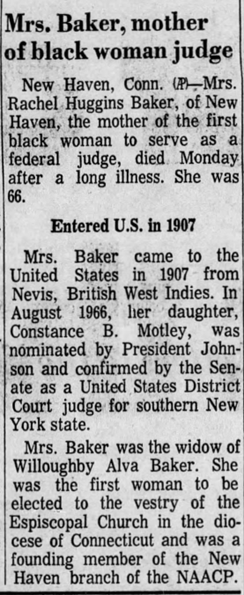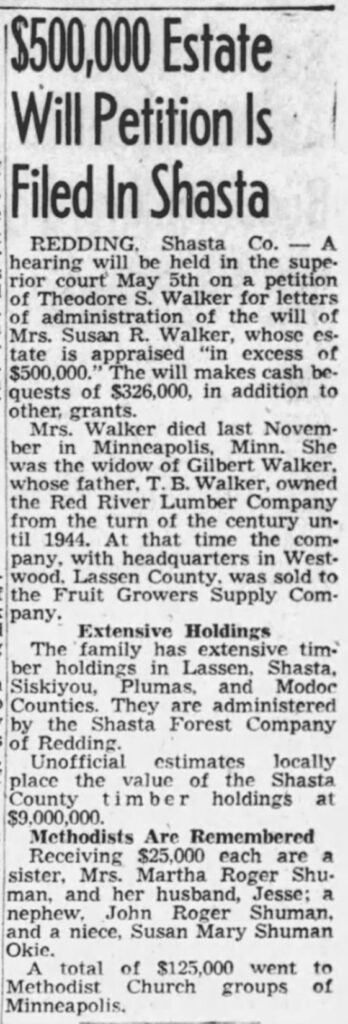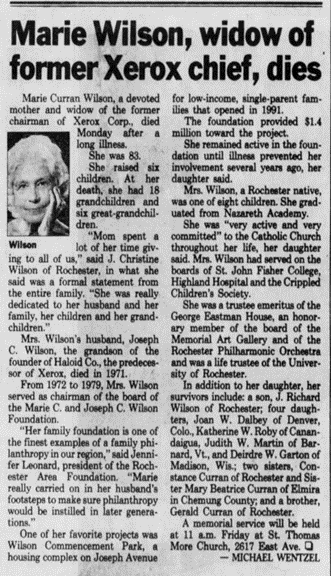by: Maura Monley Baron, Consultant
From the beginning of my career as a researcher I have always been drawn to obituaries. Not only because they provide information essential to our work, but I also love the stories they tell and the generational history that can be learned from them.
I see obits as a window into the lives of individuals and families and the people, places, and things that they care about. Last December I worked with my family to write an obituary for a beloved family member. As a researcher, my first instinct was to be cautious with the amount of personal information shared because I know how researchers use this information, and I knew it could be used for identity theft.
However, as we started writing, I found myself letting go of my concerns and wanting to share because I was proud of my family member, and I wanted to tell their story. This experience advanced my appreciation for obituaries and inspired this blog post.
A Brief History of Obituaries
As I started working on this blog my first step was to do a little research about obituaries. In doing so I learned that obituaries have evolved from simple death notices to detailed narratives that tell the story of a person’s life.
The earliest known obituaries date back to ancient Rome. With the invention of the printing press, the newspaper industry boomed, and the tradition of publishing death notices continued. During the American Civil War newspapers published death notices for soldiers, which included biographical details. This practice helped communities keep track of the living and the dead, making obituaries a vital part of the public record.
By the late 20th century, obituaries had become more personal, including family stories and photographs. Today, obituaries are often published online, allowing for even more detailed memorials. Funeral home websites, and the platforms they utilize provide space for families to share photos, stories, and memories, creating a digital tribute and a valuable source of information for our research.
Sometimes you cannot find an obituary – which is frustrating – however my research informed me that obituaries are not a legal requirement, and certain religions and cultures may choose not to publish them for various reasons. Some families may opt not to publish an obituary due to privacy concerns, financial constraints (most newspapers charge by the word to print obituaries), or because the deceased requested not to have one.
Newspaper archives are the best place to find older obituaries and a subscription to Newspapers.com is helpful. Other resources include Legacy, Genealogy Bank, Family Search, Dignity Memorial, and Find a Grave.
Tips for Using Obituaries in your Research
The Basics
To be clear I do understand that a deceased person is not a good prospect. However, the obituary can confirm key information about a person’s life, including birth date and place, education, career, where they lived, and other life events. This gives you an overview of an individual and is useful for verifying information about surviving family members.
Generational Wealth
A “good” obituary can be one of your most valuable tools when working on a complex prospect with generational wealth. Most obituaries list surviving relatives, including spouses, children, siblings, and sometimes even grandchildren or great-grandchildren. This information can help you build family trees and identify connections between different branches of a family. I often find myself revisiting an obituary as I move through my research, and I like to keep the obit open in my browser for reference.
From the 1870s to the 1950s, in conjunction with the publication of an obituary was the practice of publishing details about a deceased person’s will and estate in newspapers. While this seems like an incredible invasion of privacy, I learned that during this period, newspapers were a primary source of information for the public, and legal notices, including probate notices, were often published as part of the public record. This was how surviving family members were notified of the contents of a will and provided a means for distant relatives to discover information about an inheritance (or a missed one). These articles, though not an obituary, will provide detailed information about how much family members inherited, including cash, securities, and real estate.
So Much Can Be Learned from a Name
A middle name or even a middle initial can be very helpful for confirming a prospect with a common name. An obituary can also confirm where a prospect lives. By finding these additional details it will be much easier to confirm your prospect when you utilize research tools like LNDP, Kindsight, or ResearchPoint. I also look for a relative of my prospect with a less common name and search for that person on social media which can lead to more information about the family and the ability to confirm relationships.
Obituaries can be particularly helpful in identifying women’s maiden names. Often, I find an indication of generational wealth from first or middle names which identify a last name of a previous generation.
Finding Clues for Further Research
Obituaries detail community affiliations, such as religious organizations, professional associations, or social clubs. Sometimes they include information about where a prospect’s family has lived, including second homes, that may still be in the family. The name of a business found in an obituary can lead to the discovery of a current company and a history of stock ownership by the family. Following these leads often brings you to additional records and sources of information.
Philanthropy
Obituaries also indicate organizations a person was affiliated with as an alum, board member, or volunteer. This may help you confirm gifts from your prospect to these organizations. Information about where a family directs memorial donations can confirm a family’s philanthropic interests or reveal significant donations recognized through naming opportunities. Sometimes a specific donor advised fund name is provided as well.
In the End….
When using obituaries for research, it is important to remember that the information provided may not always be 100% accurate, as it is often provided by family members. Cross-referencing with other sources is always necessary for verification.
As with many things in prospect research the obituary will serve as a piece of a larger puzzle. A detail from an obituary may lead you down the road to finding information about your prospect that influences your rating or creates a connection to your organization. I feel most satisfied with my work when I can provide my client with a strong prospect in terms of capacity but also when I feel I have found evidence of a connection between the prospect and their family and the work of the organization, and an obituary often helps with both.
Obituaries have changed significantly from their simple beginnings to the detailed digital memorials of today. They continue to serve not only as a public record of death but also as a celebration of life.
It will be interesting to see what the future holds for obituaries. Like all things their evolution will be influenced by the complex digital world we live in. As a human and a prospect researcher I hope they do not become obsolete as they are important to the process of grieving and provide an opportunity to tell the story of a life well lived while also being an indispensable resource.






